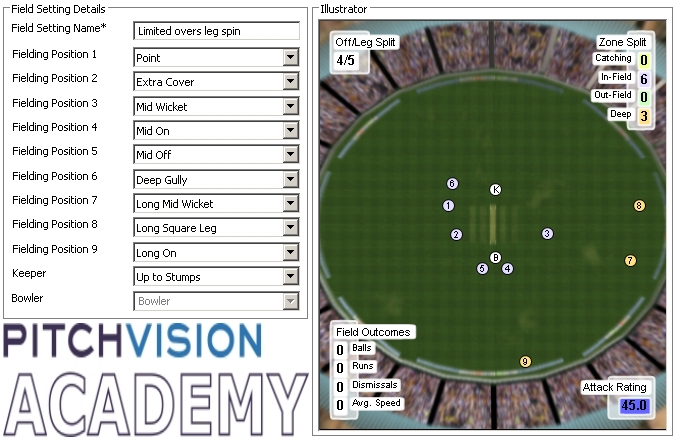Ask the Readers: Set a Seam Bowler Field and Win a Prize
It’s been a while since I asked for your help in return for some online cricket coaching; but now the time has come again.
I need your help with setting a field for another new player in my team. Yes, this is a real life problem.
Like last time with our left-arm spinner, we have a new bowler.
What is the best field for a medium pace seam bowler in a club league match?
Grind It Out: How to Bowl Well on a Lifeless Pitch
Dead pitches make for very dull cricket: Unless you learn how to spice things up.
My club is a perfect example. Pitches that have no pace or bounce means batsmen have plenty of time to handle stock line and length bowling.
Slips have little chance of a catch carrying.
It’s why our bowlers have started working on variations that help on slower pitches when it’s a stalemate:
How to Control the Middle Overs Bowling First
In part one of this analysis of a 50 over club limited overs match, we looked at the first 15 overs. In this part we examine the tactics used by Craig Wright, former Scotland and current Watsonian CC captain, during the lull middle overs.
How do you manage the middle overs of a limited over match?
Why Playing Bad Cricket Makes You a Better Cricketer
If I’m being very kind, the standard of midweek league cricket in this part of the world is “mixed”. Despite that, my experience in a recent game showed me that playing bad cricket in poor conditions will help you improve.
It was the first game of the new season; a twenty over slog squeezed in before the sun went down; no umpires, no sightscreens. I was playing for a new team and two guys turned up in shorts and black trainers.
Black trainers are a solid indicator that general standards will be poor.
Secrets of One Day Cricket Tactics from a Former International
Craig Wright, Scotland’s most capped player, captained over 100 times for his country. He is still captaining today with Watsonian CC.
When I was in Scotland I took the chance to examine his tactics and methods in the field and learn from someone with unrivalled experience as a skipper.
This is the blueprint of the limited over game against Grange CC.
How would you have managed the game as captain?
Field Settings: Slow Left Arm Spin, Old Ball, Club Wicket, Limited Over
This article is part of "The complete guide to cricket field settings" series.
Who can resist something for free?
Ask the Readers: Set a Slow Left Arm Field and Win a Prize
I have a problem. With your help I can solve it, so read on and leave a comment in the comments box with your field.
As a little incentive, the best field will win the prize of an online coaching course from our library at PitchVision Academy.
What is the best field for a slow left arm bowler in a club league match?
Field Setting: Off spin, old ball, turning wicket, limited overs
 This article is part of "The complete guide to cricket field settings" series.
This article is part of "The complete guide to cricket field settings" series.
In limited over matches there are times when the batsman is on top and an off-spinner is bowling.
Field Setting: Leg spin, old ball, turning wicket, limited overs
 This article is part of "The complete guide to cricket field settings" series.
This article is part of "The complete guide to cricket field settings" series.
When a batsman is all set and looking to go after you, towards final overs a leg spinner can easily get thrashed if he doesn’t have a proper field to bowl to.
Tactics you should be using: Leave the field up
Knowing when to leave a fielder up or push him back is quite the art.
Do it too early and you give away easy runs or miss a chance to take a wicket. Do it too late and it costs you big.
Tactically aware bowlers seem to have this 6th sense, Jedi mind trick to know when to do it. But it’s more a conundrum to others.
Working in the grey area

